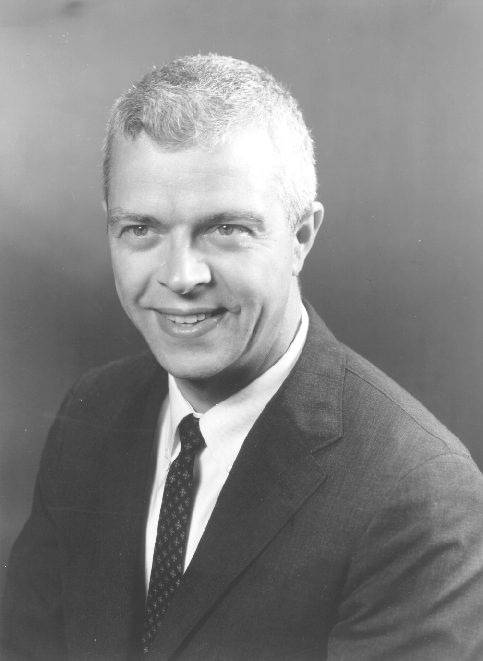 |
|
Brown's Lunar Exploration Working Group Michael's Paper on a "Parking Orbit" The Feelings Against Lunar-Orbit Rendezvous The Space Task Group's Early Skepticism President Kennedy's Commitment Houbolt's First Letter to Seamans
|
Houbolt's
First Crusade
In his paper presented before the Society of Automotive Engineers, of all organizations, in April 1960, 41-year-old John Cornelius Houbolt focused on "the problem of rendezvous in space, involving, for example, the ascent of a satellite or space ferry as to make a soft contact with another satellite or space station already in orbit." His analysis of "soft rendezvous" could have applied to a lunar mission, but the paper did not specifically refer to that possibility.29 However, Houbolt already had been studying such an application. This was clear from the minutes of a meeting of Langley's Manned Space Laboratory Group on 5 February 1960, when Houbolt discussed the general requirements of a "soft landing device" in a lunar mission involving lunar-orbit rendezvous. This discussion took place even though that particular rendezvous committee was supposed to focus more narrowly on reaching and leaving an Earth-orbiting space station.30 From this point on, Houbolt began to advertise the idea of lunar-orbit rendezvous in different meetings and conversations. In the spring of 1960, he talked about landing on the Moon with Robert O. Piland and various other members of NASA's Space Task Group. During the same period, he mentioned the lunar-orbit rendezvous concept to William A. Mrazek, director of the Structures and Mechanics Division at Marshall Space Flight Center, for whom he had been helping evaluate the S-IV stage (consisting of four uprated Centaur engines) of the Saturn rocket.31 By
the early summer months of 1960, when the Lunar Mission Steering Group
first began holding meetings, Houbolt already had discovered the advantages
of a lunar landing mission via lunar-orbit rendezvous. Intellectually
and emotionally, he had embraced the concept as his own. Sometime during
the previous months, while performing "back-of- Houbolt's first chance to "convert" others in terms of what now was his LOR concept was in September 1960, when new NASA Associate Administrator Dr. Robert C. Seamans, Jr., toured the Langley Research Center during an orientation visit. Seamans had a Ph.D. in aeronautical engineering from MIT and was a former member of a National Advisory Committee for Aeronautics (NACA) technical subcommittee on aircraft stability and control. He had assumed the NASA position on 1 September and one of his first official duties was visiting all of the agency's field centers to learn about their programs and meet their personnel. One of the many people he encountered at Langley was an excited John Houbolt, who seized the moment to speak privately about the advantages of LOR. In essence, he said that "we ought to be thinking about using LOR in our way of going to the Moon."33
|
|
|
|
